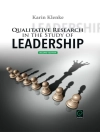Fundamentals of Human Resource Management: People, Data, and Analytics provides a current, succinct, and interesting introduction to the world of HRM with a special emphasis on how data can help managers make better decisions about the people in their organizations. Authors Talya Bauer, Berrin Erdogan, David Caughlin, and Donald Truxillo use cutting-edge case studies and contemporary examples to illustrate key concepts and trends. A variety of exercises give students hands-on opportunities to practice their problem-solving, ethical decision-making, and data literacy skills. Non-HR majors and HR majors alike will learn best practices for managing talent in today’s ever-evolving workplace.
विषयसूची
Preface
Acknowledgments
About the Author
Part I: HRM in Context
Chapter 1: Human Resource Management
Learning Objectives
Defining Human Resource Management
HRM Matters
Macro Changes and HRM
The Profession of HRM
Chapter 2: Strategic HRM, Data-Driven Decision Making, and HR Analytics
Learning Objectives
Defining Strategy
Linking Strategy With HRM: Strategic HRM
Strategic HRM, Data-Driven Decision Making, and HR Analytics
How Does a System of HR Practices Influence Organizational Outcomes?
HR Analytics and the Scientific Process
HR Analytics Success
Chapter 3: Data Management and Human Resource Information Systems
Learning Objectives
Managing Data
Data Management and HRIS Opportunities
Challenges for Data Management and HRIS
Developing a Human Resource Information System
Implementing a Human Resource Information System
Chapter 4: Diversity, Inclusion, and Equal Employment Laws
Learning Objectives
Challenges and Benefits of Managing Diversity Effectively
An Overview of Equal Employment Opportunity Laws
Title VII of the Civil Rights Act
Additional Antidiscrimination Acts and Protections
Diversity and Inclusion in the Age of HR Analytics
Chapter 5: The Analysis and Design of Work
Learning Objectives
The Analysis of Work and Its Critical Role in HR Practice
Collecting Job Analysis Data
Specific Job Analysis Methods and Approaches
Designing Jobs to Enhance Motivation, Attitudes, Well-Being, and Performance
Flexible Work Arrangements
Part II: Managing Across the Talent Life Cycle
Chapter 6: Workforce Planning and Recruitment
Learning Objectives
Understanding the Labor Landscape
The Recruiting Process
Stages of Recruitment
Recruiting for Diversity
Recruitment Results: Evaluating Effectiveness and Metrics
Chapter 7: Selection Processes and Procedures
Learning Objectives
Setting the Stage for Selection: Job Analysis, Recruitment, and Legal Issues
Data-Driven Decision Criteria for Choosing Selection Procedures: Reliability, Validity, and Utility
Selection Procedures
Emerging Issues in Selection
Applicant Reactions to Selection Methods and Procedures
Deployment of Selection Procedures
Chapter 8: Training, Development, and Careers
Learning Objectives
Training Needs Assessment
Enhancing Learning
Training Methods
Evaluating the Effectiveness of Training Programs
Career Development and Management
Chapter 9: Performance Management
Learning Objectives
What Is Performance Management?
Design Features of Performance Management Systems
Conducting Fair Performance Reviews
Improving the Effectiveness of Performance Management
Teaching Managers How to Be Good Coaches and Build Trust
Chapter 10: Managing Employee Separations and Retention
Learning Objectives
Understanding and Managing Employee Separations
Voluntary Turnover
Managing Employee Retention
Involuntary Turnover: Dismissals
Involuntary Turnover: Layoffs
Part III: Reward Systems
Chapter 11: Rewarding Employees
Learning Objectives
Pay as a Reward
Developing a Pay Structure
Pay as a Motivator
Pay-for-Performance Programs
Challenges and Opportunities of Reward Systems
Chapter 12: Managing Benefits
Learning Objectives
Benefits as Rewards
Legally Required Benefits
Voluntary Benefits
Administering Benefits Programs
Communicating Benefits Programs
Part IV: Special Topics in HR
Chapter 13: Employee and Labor Relations
Learning Objectives
Factors Influencing Employee Relations
Organizational Policies and Procedures
The Labor Movement
The Collective Bargaining Process
Failure to Reach an Agreement
Chapter 14: Employee Safety, Well-Being, and Wellness
Learning Objectives
The Role of HRM in Worker Safety and Health
Workplace Safety
Workplace Stress
Employee Wellness Programs
Total Worker Health™: An Integrated Approach to Worker Well-Being
Chapter 15: Opportunities and Challenges in International HRM
Learning Objectives
Global Transfer of HR Practices
Important Considerations When Transferring HR Practices Across Borders
Managing HR Globally
Motivating, Rewarding, and Managing Expatriates
Alternatives to Long-Term Relocation Assignments
Appendix A: Cases
Appendix B: Data Analytics Exercises
Glossary
Notes
Index
लेखक के बारे में
Donald Truxillo, Ph D Professor of Work and Employment Studies Donald Truxillo earned his Ph D from Louisiana State University. He is a professor at the Kemmy Business School, University of Limerick, Ireland, and Professor Emeritus at Portland State University. Previously, he worked in the areas of selection, employee development, and promotions in the public sector as an industrial psychologist and as a professor in the industrial/organizational psychology program at Portland State University. He studies the methods employers use to hire workers and the experiences of job applicants during recruitment and hiring. In addition, Donald examines issues related to workplace safety and health as well as age differences at work. He served as associate editor for the Journal of Management and is currently an associate editor at Work, Aging and Retirement. He is a member of nine editorial boards including Journal of Applied Psychology, Personnel Psychology, and Human Resource Management Review. He is the author of more than 100 peer-reviewed journal articles and book chapters. Donald is the recipient of SIOP’s 2017 Distinguished Teaching Contributions Award and a coauthor of the textbook Psychology and Work: Introduction to Industrial and Organizational Psychology. His research has been supported by the SHRM Foundation, the National Institute of Occupational Safety and Health (NIOSH), and the National Science Foundation (NSF), most recently to study privacy and security issues associated with online hiring. He has taught courses in human resource management, training and development, research methods, and industrial psychology. He has received three Fulbright grants to study abroad and has visited at universities in Italy, Portugal, Spain, Switzerland, Ireland, and Germany. Since 2010, he has been a member of the Doctoral Training Committee, Department of Psychological Science and Education, University of Trento, Italy. He is a fellow of SIOP, APA, APS, and IAAP.












